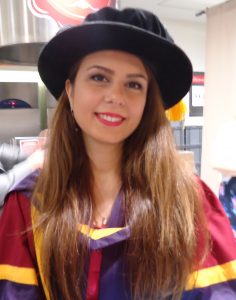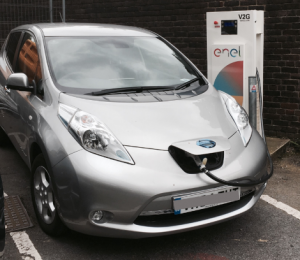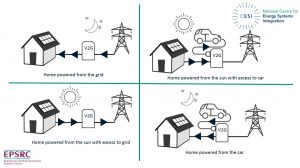Jon Gluyas and Charlotte Adams discuss recent CESI research which looks at how the UK’s heat supply can be decarbonized and national energy security improved.
About the authors
Dr Charlotte Adams is Assistant Professor in the Department of Geography at Durham University and a Mid Career fellow in the Durham Energy Institute. She is Manager of BritGeothermal, a UK-based consortium focusing on deep geothermal research both in the UK and internationally.
Assistant Professor in the Department of Geography at Durham University and a Mid Career fellow in the Durham Energy Institute. She is Manager of BritGeothermal, a UK-based consortium focusing on deep geothermal research both in the UK and internationally.
Contact: c.a.adams@durham.ac.uk Profile Details
Professor Jon Gluyas is an Associate Director of CESI, 
Executive Director of Durham Energy Institute and
holds the ØRSTED/IKON Chair in Geoenergy, Carbon Capture & Storage in the Department of Earth Sciences at Durham University. Jon has published widely, including text books, memoirs and over 100 per review papers
Contact: j.g.gluyas@durham.ac.uk Profile Details
Two recent papers to emerge from CESI examine the potential to decarbonize the UK’s heat supply and simultaneously improve national energy security. It is likely that most will view improvement of UK energy security as the priority given threats to UK gas supplies resulting from the diplomatic fall out between the UK and Russia. The link between gas supply and heat is straightforward.
About half the UK’s energy consumption is used to generate heat for domestic, commercial and industrial spaces and burning natural gas generates most of that heat. Since 2005 the UK has been progressively more dependent upon gas imports to meet demand. Currently, we can supply around 35-40% of our needs with about the same coming from Norway via the Langeled Pipeline. Much of the remainder is supplied as LNG from Qatar leaving about 5% that comes via the interconnectors from Belgium and the Netherlands. No single molecule of methane travels from Moscow to London but that 5% from Europe is essentially controlled by Russia because of its dominance on the European gas supply market. To exacerbate the situation, the UK has but a few days gas storage supply, mostly though changing the pressure in the nationwide gas network. This compares very unfavourably with both Germany and France both of which have about 3 months stored supply.
Gas supply warnings, though infrequent, demonstrate how precarious the situation is. The most recent was issued on 1st March 2018 amid the icy conditions of a late-winter cold snap. Others have accompanied similarly freezing weather in 2010 and problems with the Langeled Pipeline in 2009. The ongoing tiff between Qatar and Saudi Arabia has not yet had an impact on supplies of LNG but it could. National Grid was able to withdraw its warning after about 24 hours but it remains highly likely that UK gas and hence heating supplies could be interrupted by either political or technical issues. We are vulnerable!
The two papers referred to at the start of this article lay out the resource potential of low enthalpy geothermal heat in the UK. The article by Gluyas et al on ‘Keeping warm: a review of deep geothermal potential of the UK’ examines how much heat could be extracted from sedimentary basins and granite bodies while Adams and Gluyas article on ‘We could use old coal mines to decarbonize heat – here’s how’ looked at the resource potential of ultra-low enthalpy heat in abandoned flooded coal mines. A very conservative estimation indicates that at current levels of heat use there is an absolute minimum of 100 years heat supply from these sources. Moreover, such heat sources have a near zero carbon footprint.




 Dr Mike Simpson is a Research Associate working part-time with CESI. His background is in programming, game development and visualisation, and he is currently working as a Research Software Developer in the Digital Institute at Newcastle University.
Dr Mike Simpson is a Research Associate working part-time with CESI. His background is in programming, game development and visualisation, and he is currently working as a Research Software Developer in the Digital Institute at Newcastle University.






 Professor Phil Taylor is the Director and Principal Investigator at CESI. He is an internationally leading researcher and industrial expert in energy systems, electrical distribution networks, smart grids and energy storage integration and control. He is the Siemens Professor of Energy Systems, Deputy Pro Vice Chancellor of SAgE Faculty and Head of the School of Engineering at Newcastle University.
Professor Phil Taylor is the Director and Principal Investigator at CESI. He is an internationally leading researcher and industrial expert in energy systems, electrical distribution networks, smart grids and energy storage integration and control. He is the Siemens Professor of Energy Systems, Deputy Pro Vice Chancellor of SAgE Faculty and Head of the School of Engineering at Newcastle University. Dr Sara Walker is an Associate Director and Co-Investigator at CESI. Her research focus is regarding renewable energy technology and transitions to low carbon systems, with a particular focus on policy and building scale solutions. She is Director of Expertise for Infrastructure at the School of Engineering at Newcastle University.
Dr Sara Walker is an Associate Director and Co-Investigator at CESI. Her research focus is regarding renewable energy technology and transitions to low carbon systems, with a particular focus on policy and building scale solutions. She is Director of Expertise for Infrastructure at the School of Engineering at Newcastle University.

 The North East of England, the home of Nissan Manufacturing UK, has a huge amount to offer and benefit from this automotive and energy system revolution. The potential breakthroughs in this area open up the possibility for people to see their car as much more than just a means of getting from A to B; it will allow families to become active participants in a future energy system which is low carbon, secure, equitable and affordable for all.
The North East of England, the home of Nissan Manufacturing UK, has a huge amount to offer and benefit from this automotive and energy system revolution. The potential breakthroughs in this area open up the possibility for people to see their car as much more than just a means of getting from A to B; it will allow families to become active participants in a future energy system which is low carbon, secure, equitable and affordable for all.